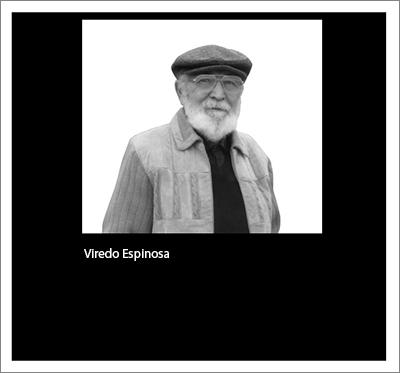
Viredo Espinosa, famed Cuban painter, dies

BY JANET BATET
SPECIAL TO EL NUEVO HERALD
Viredo Espinosa, a member of The Eleven, whose work represented the birth of Cuban abstract art and the tuning of Cuban modern art, died Sunday at his home in Costa Mesa, Calif.
Espinosa was born in Regla, a hamlet of fishermen and workers closely linked to the port industry, home to Afro-Cuban religions and a cradle of musicians and dancers. Since his childhood, the artist was attracted to the lively folklore that invaded the life of his native city. The direct contact with Afro-Cuban and Catholic religions gave shape to the imagery that would always accompany him.
Espinosa studied architecture at San Alejandro Academy in Havana. At a very early age, he contributed illustrations to periodical publications such as the newspaper Zigzag, and he learned the craft of sign labeling that would lead him to painting murals.
Espinosa’s work can be summarized in three fundamental stages.
The first one, which the artist said was influenced by children’s drawings, was mostly occupied by his mural paintings.
The second stage was marked by geometric abstractions and it is during this time that his work as a member of The Eleven emerged.
Finally, a third stage finds him already in exile, where the merging of the two previous stages prompts a symbiosis that will give birth to his definitive characteristic style in which the presence of his native Cuba’s customs, and more specifically of his town of Regla’s, are fundamental.
Espinosa’s work erupted in Havana’s art scene in 1948 during the Book Fair hosted by the Ministry of Education at Havana’s Central Park, where two of his paintings were exhibited, and later in 1953, when he was assigned the murals and stained-glass windows of the Vedado’s Embassy Club.
However, the dark years of Batista’s dictatorship and later Espinosa’s refusal to take part in the political system of Castro’s revolution eclipsed his creation for several years. Finally, in February 1969 Espinosa and his wife Alicia Sánchez left Cuba on one of the Freedom Flights and arrived first in Miami and later in Los Angeles.
Espinosa continued his indefatigable work, shifting from decorating store windows to painting.
He received many awards, among them a citation from the U.S. Congress and by California’s State Assembly. In 2000, he received the prestigious award “La Palma Espinada,” presented by the Cuban American Cultural Institute.
His most recent personal show took place in February at the Old Town Gallery in Tustin, Calif.
Although he never returned to Cuba, Espinosa lived always near the ocean and the sea salt, as close as he could to his native town of Regla, which always showed through his paintings.
